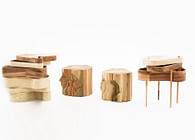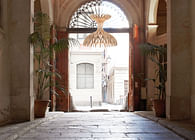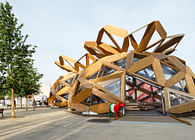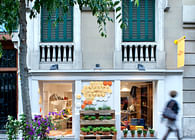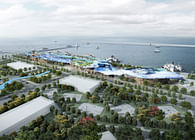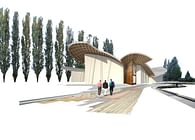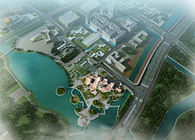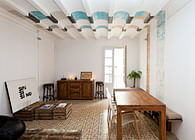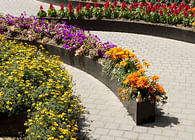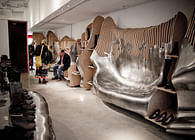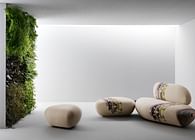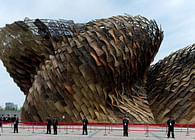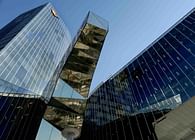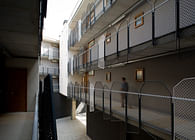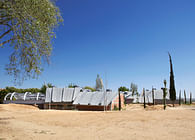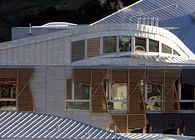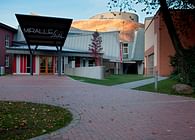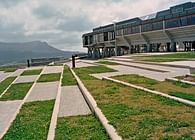
Barcelona, ES
National Maritime Museum of China
Tianjin, China
2nd Prize
The construction of a national maritime museum marks a milestone of China's maritime course. It will witness the collection, protection, research and display of human's maritime activities and natural marine environment, enhance both China's national cultural power and national quality, especially intensify people's marine consciousness and improve their knowledge of the ocean.
Life itself arose from the oceans. The ocean is vast, covering 140 million square miles. Climate and weather, even the quality of the air people breathe, depend in great measure on an interplay between the ocean and the atmosphere in ways still not fully understood. Not only has the oceans always been a prime source of nourishment for the life it helped generate, but from earliest recorded history it has served for trade and commerce, adventure and discovery. The ocean, with its enormity and mystery, has ever been part of human consciousness. As mystery gave way to mastery, whole bodies of custom, tradition and law arose defining the rights of the ships and mariners who plied the waters and of the States on the rim of the oceans.
Design Process
We are using the “museum” as a trigger enhancing the relation of people and the ocean. The ocean occupies more than 70 % area of the sphere, we started investigate deeply into the ocean which is composed by the most essential element in the world, “water”.
-China is one of the largest Nation in the world which is located on the largest continent, its seaside has creates an interface for the nation to expand and explore from the land to the ocean.
-The natural waves and the flow of the water really interest us, it’s a continuous form which varies and changes every moment. By capturing the moment of it we create the second element for the design.
-The five-continent is surrounded by the ocean, one of the most interesting phenomena in it is the cold /heat wave, which is continuously moving and swirling, creating a dynamic band which is another element for the museum concept. And if it will be the way that the people will get into and move around inside and outside the building.
-The museum will be situated according to the global map, where China is located at the center of the world which also act as a symbol and monument for the New Maritime Museum of China.
Superimposing these elements; a new dimension of spaces are created. They are not only the spatial criteria for the museum but the platform for integrating the people and the ocean´s world.
The design of the museum will also follow the principle of "Integration of the Museum and Park" and refer to a unified planning on the plots for museum and reserved lands for future development. The museum becomes an interface merging the new city, landscape and the ocean altogether which also becomes an instrument for people having a new scene and interpretation toward the ocean. We are sure that this project is not a single museum but a complex of park, marine experience, museum groups, and community economy and cultural development facilities. The ability of bringing public flow into the museum is also one of our main goals.
Landscape
In the design of landscape, we utilize the element and the patterns like the wave movement, the biological morphology of the ocean, land and sea resource, as well as the picture ancient chinese form, to create a new coastal space, new urban landscape space, while also create a new building. Let people have a different experience between the building and the landscape. The boundary between the water and land also creates another highlight of the project. The people can have a new experience in the movement through the land to the water exhibition area.
Status: Competition Entry
Location: Tianjin Shi, CN
Firm Role: Architect and Landscape Architect
Additional Credits:
NATIONAL MARITIME MUSEUM
Date: 2012
Location: Tianjin, China
Client: Tianjin City Hall
Type of project: International competition
Program: museum, landscape
Architect: Benedetta Tagliabue - Miralles Tagliabue EMBT
EMBT Barcelona Team
Project Directors: Karl Unglaub, Salvador Gilabert
Shanghai Team: Igor Peraza, Pey Lung
Staff Architect: Stefan Geenen
Collaborators: Gabriele Rotelli, Bárbara Lorenzoni, John Sprunt, Álvaro Hidalgo Nuñez, Angelos Siampakoulis, Jiyoun Park, Arturo Mc Clean, arch., Gabriela Dos Reis Cruz, arch., Alex Ruiz, José Pedrosa Torres, Iván Jiménez, Ramón Gómez Ruiz, arch., Santiago Nuez Fernández, arch., Valandis Kallis, Blake Naumann, Melanie Weitz, Paula Sarasúa de la Bárcene Pérez, arch., Rafael Hernández, Maddalena Vitti, Elisa Valdarnini, Laura Sandoval Palacios, Marta Basaglia, Otilia Toldi, Mario Viñas, Giulia Babboni, arch., Leonardo Nils Tocchi.
Structural Engineer: Julio Martínez Calzón MC2 - Estudio de Ingeniería, Madrid
Built Area: 105.000m²
